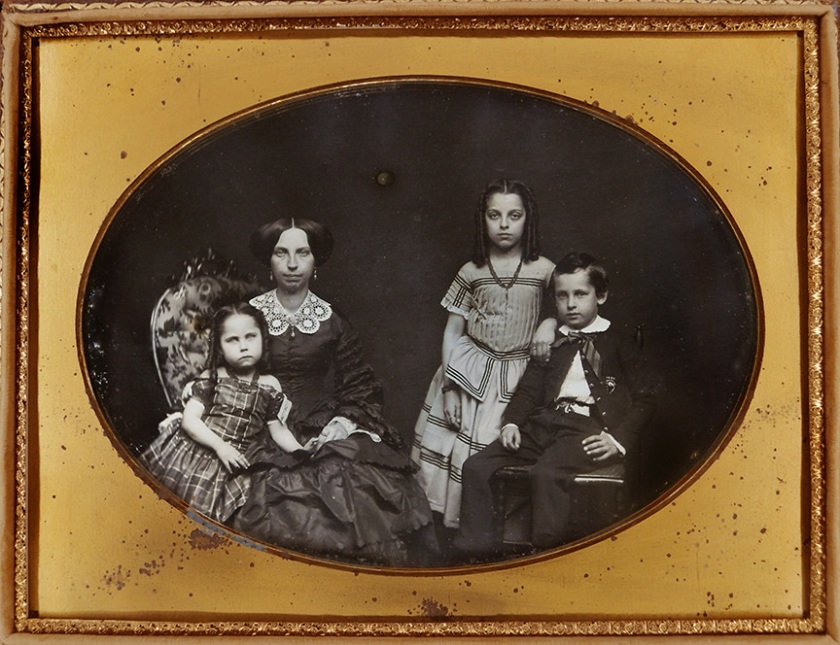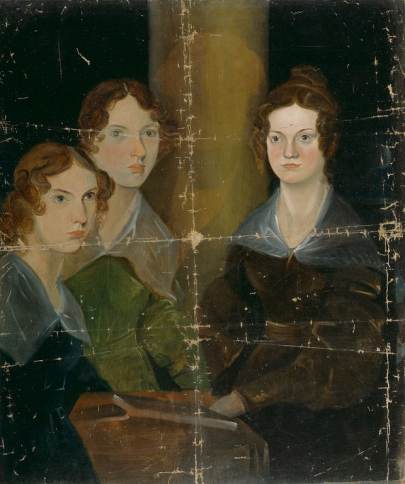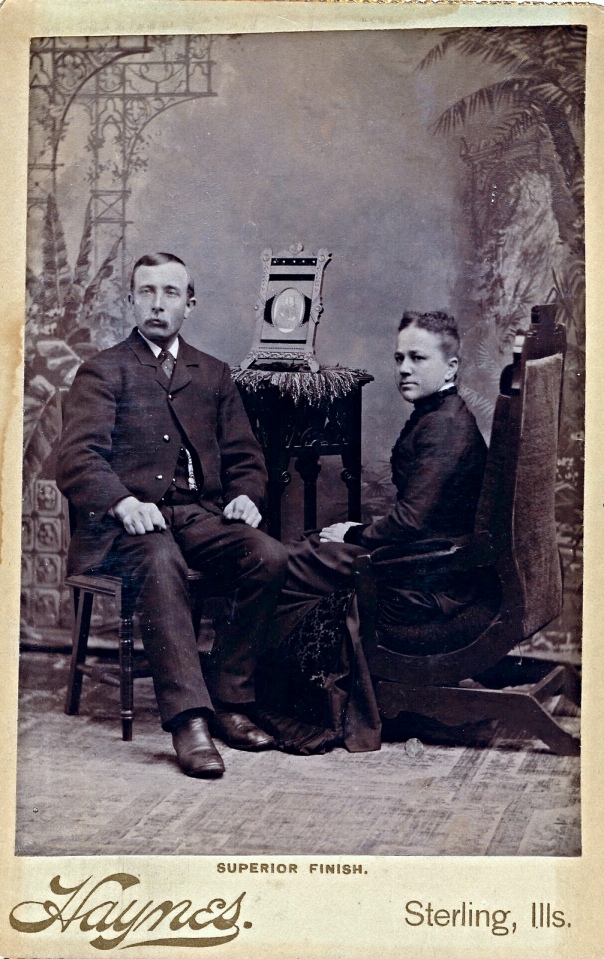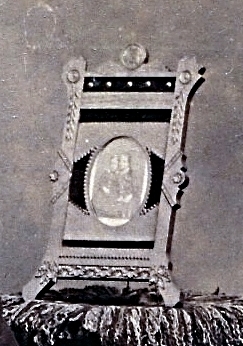
This mid-1850s, whole-plate daguerreotype of a woman and three children is from the collection of Beverly Wilgus, another of the antique photo collectors of Flickr who has graciously allowed me to present her images. Of it, she writes, “[W]e have had the glass replaced by a conservator. It is our only whole plate daguerreotype (6 ½” X 8 ½”), which is the largest size that was in common production…. I have been asked why there is not father with the family. While it is possible that the father is deceased, I like to think that the photograph was a gift for him.”
If this image was a gift for Father, it was almost certainly purposefully posed to remind him, or any viewer, of his absence—the blank space in the middle the group screams to be filled. It is reminiscent of the portrait of the Bronte sisters, now known as the “Pillar Portrait,” which hangs in the National Gallery in London.

Painted in 1834 by the sisters’ talented, ego-driven, and alcohol-fueled brother who was then attempting to become a portrait artist, Branwell Bronte chose to eliminate himself and insert a column instead. It has been argued that he felt the composition was too crowded or that it was done in high dudgeon—we may never know which for sure. Charlotte died in 1855, at about the same time as Beverly’s daguerreotype was taken. After the death of Charlotte’s father in 1861, her husband, the Reverend Arthur Bell Nicholls, cut the painting from its frame, folded it up, and took it with him to his native Ireland, where it languished for many years. During that time, the “ghost” of Branwell began to appear through the paint—part spectral bogeyman, part prodigal son.

Another of Beverly’s images—this one an ambrotype also taken in the mid-1850s—again makes use of empty space to convey the message of loss. And in this image, it is indisputably death that has struck twice, leaving two pointed shapes like stab wounds between the three young people. A “reader” of this portrait, and it was yet very much a time of encoded meanings in art and photography, would know immediately that the teenage girls wore mourning gowns: the dark, wide lace collars of their dresses leave no doubt that the entirety of their costume is black. Between them is their younger brother, now the man of the family, reassuringly touching his elder sister’s arm. He seems stoic but unprepared for the task.

This final image used props to fill the void caused by death. Whilst the husband and wife focused on a point stage left (she almost certainly dressed in mourning), between them sat a plant stand covered by what must have been a colorful, almost childish string doily, upon which an elaborate picture frame was placed. It contains an image a girl and possibly a boy. The message can be taken no other way: “These were our children; now they are no more.” Ω


Congratulations on your wonderful blog which I will follow with interest. Beverly
LikeLiked by 1 person
Thank you so much, Bev! Can’t wait to see some guest posts from your noted plume!
LikeLike
“…it was yet very much a time of encoded meanings in art and photography” – I didn’t know this. That would be an interesting subject for an essay.
LikeLiked by 1 person
“Mostly Void, Partly Father” touched me in very personal ways. I love the idea of noticing what is absent from the image. Or more precisely, “who” is absent. I’m also fascinated by the idea of decoding the image; the clues left behind by the now dead, mourning the then dead. I may have to write a poem about this.
LikeLiked by 1 person
And I cannot wait to read it!
LikeLike
I did not know the story about the Bronte’s portrait and how the ghostly image of the brother who painted it came through over time. That said, I hope that the father in the first photo’s absence is due to him being the photographer of the photo and not because he had passed away and was missed. Also, that last photo of the couple with the children who had already passed away in another photograph placed between the husband and wife, is HEARTBREAKING.
LikeLiked by 1 person